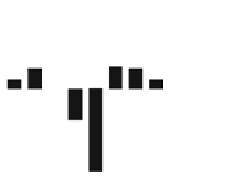Geoscience Reference
In-Depth Information
Large Fire Years
Small Fire Years
A.
B.
1.0
1.0
0.5
0.5
0.0
0.0
-0.5
-0.5
-1.0
-1.0
-1.5
-1.5
-5-4-3-2-1 0 1 2 3 4 5
-5-4-3-2-1 0 1 2 3 4 5
0.50
0.50
C.
D.
0.25
0.25
0.00
0.00
-0.25
-0.25
-0.50
-0.50
-5 -4 -3 -2 -1 0
1
2
3
4
5
-5 -4 -3 -2 -1 0
1
2
3
4
5
1.5
1.5
1.0
1.0
0.5
E.
0.5
0.0
0.0
F.
-0.5
-0.5
-1.0
-1.0
-1.5
-1.5
-5-4-3-2-1 0 1 2 3 4 5
-5-4-3-2-1012345
Fire Year
Fire Year
Fig. 9.4
Superposed epoch analysis (SEA) of large and small regional fire years in relation to
summer Palmer Drought Severity Indices (PDSIs) in the southwestern United States and Niño-3
sea surface temperature (SST). Plots
A
and
B
show results for largest (38) and smallest (36) fire
years during the period 1600-1900, using tree-ring width reconstructions of southwestern PDSI
Plots
E
and
F
show SEA results using modern PDSI based on instrumental data and the largest
(19) and smallest (23) fire years from area burned records from all federal, state, and private lands
in Arizona and New Mexico during the period 1905-2004. Lines in each plot represent the 0.05,
0.01, and 0.001 confidence intervals based on Monte Carlo simulations of random distributions of
annual climate conditions for PDSI and Niño-3
1-3 years of wet conditions. These fires were mainly surface fires, burning in grasses
and herbaceous fuels, and wet conditions would have resulted in more continuous
and denser fuels that would have burned more readily and have been widespread














































































































































































































































































































































































